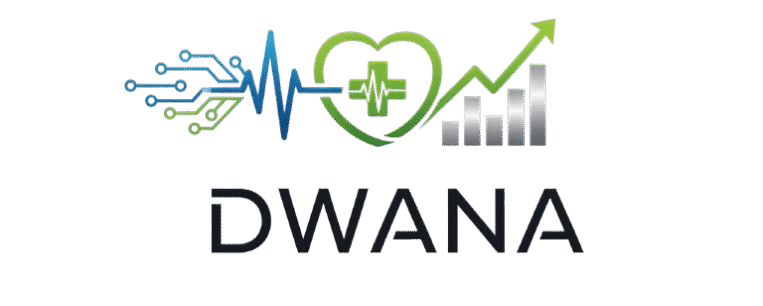How to Build a $100,000 Stock Portfolio from Scratch: A Strategic Blueprint
Imagine opening your investment account and seeing a six-figure stock portfolio with your name on it. It’s not a distant dream reserved for Wall Street veterans or those with a large inheritance. Building a $100,000 stock portfolio from scratch is an achievable goal for disciplined, strategic investors worldwide. Whether you’re in the U.S., Canada, the U.K., Australia, or the UAE, the principles of wealth creation through equities are universal. This comprehensive guide will provide you with the actionable steps, foundational knowledge, and strategic mindset required to turn your starting capital into a significant financial asset. This isn’t about getting rich quick; it’s about getting rich surely.
The journey to build stock portfolio worth $100,000 requires a blend of financial discipline, market knowledge, and a long-term perspective. We will break down this ambitious goal into manageable stages, from crafting your initial investment plan and selecting your first stocks to implementing advanced diversification strategies for sustained growth. Let’s embark on this journey to transform your financial future.
Laying the Foundation: Mindset and Capital
Before you buy a single share, the most critical step is to establish a rock-solid foundation. This involves preparing your personal finances and adopting the correct investor mindset. Without this base, even the best stock picks can fail to lead to lasting wealth.
Cultivating the Right Investor Mindset
Building substantial wealth is a marathon, not a sprint. Embrace a long-term perspective. Market volatility is inevitable; it’s the price of admission for higher returns. Your goal is not to time the market but to spend time in the market, allowing compound growth to work its magic. Patience and discipline will be your greatest assets.
Assessing Your Financial Health
You cannot build a towering portfolio on a shaky financial base. Before investing, ensure your personal finances are in order.
-
Emergency Fund: Secure a liquid emergency fund covering 3-6 months of living expenses. This cash cushion prevents you from being forced to sell investments at a loss during unexpected life events.
-
High-Interest Debt: Prioritize paying off high-interest debt (e.g., credit cards, personal loans). The guaranteed return from eliminating a 20% interest debt far outweighs the average ~10% annual stock market return.
-
Cash Flow Management: Understand your budget. How much capital can you allocate monthly to your investment goal? Consistent investing is the engine of portfolio growth.
The Power of Consistent Contributions
The initial amount you invest is less important than your ability to contribute regularly. Setting up automated monthly transfers to your brokerage account enforces discipline and leverages dollar-cost averaging—you buy more shares when prices are low and fewer when they are high, smoothing out your average purchase price over time.
Crafting Your Investment Strategy
With your foundation set, it’s time to define your investment strategy. Your plan is your roadmap; it keeps you on course during market euphoria and panic.
Defining Your Goals and Risk Tolerance
Ask yourself: Why am I building this $100,000 portfolio? Is it for a down payment on a house in 10 years? Retirement in 30 years? Your time horizon directly influences your risk tolerance. A longer horizon allows you to weather more short-term volatility in exchange for higher potential growth. Be brutally honest about how you would react to a 20% portfolio decline. Your risk tolerance will dictate your asset allocation.
Choosing Your Investment Style: Active vs. Passive
This is a fundamental choice every investor must make.
-
Active Investing: Involves personally selecting individual stocks with the goal of outperforming the market. It requires significant time, research, and emotional fortitude.
-
Passive Investing: Involves buying low-cost index funds or ETFs that track a broad market index (like the S&P 500). This approach accepts market-average returns but offers instant diversification, lower fees, and requires less hands-on management. For most investors building a portfolio from scratch, a passive core is the most reliable strategy.
Understanding Asset Allocation and Diversification
This is the cornerstone of risk management. Don’t put all your eggs in one basket.
-
Asset Allocation: This is how you divide your investments among different asset classes (e.g., stocks, bonds). A common heuristic is “110 minus your age” as the percentage to allocate to stocks.
-
Diversification: This means spreading your stock investments across different sectors (technology, healthcare, consumer goods), company sizes (large-cap, mid-cap, small-cap), and geographic regions (U.S., developed international markets, emerging markets). A well-diversified portfolio ensures a failure in one area doesn’t cripple your entire net worth.
The Core Pillars of Your $100,000 Portfolio
Now, let’s put theory into practice and construct the actual portfolio. Think of your portfolio as a pyramid, with a broad, stable base supporting more targeted investments at the top.
The Bedrock: Index Funds and ETFs
For the vast majority of your portfolio, especially in the early stages, broad-market index funds and ETFs should form your core. They are the most efficient way to achieve instant diversification.
-
U.S. Total Market ETFs: Track the entire U.S. stock market (e.g., VTI, ITOT).
-
S&P 500 ETFs: Track the 500 largest U.S. companies (e.g., VOO, IVV).
-
International ETFs: Provide exposure to developed and emerging markets outside your home country (e.g., VXUS, IXUS). This is crucial for global investors to mitigate country-specific risk.
According to Investopedia, index funds have consistently outperformed a majority of actively managed mutual funds over the long term, primarily due to their lower fee structure.
The Strategic Layer: Sector and Factor ETFs
Once your core is established, you can allocate a smaller portion (10-20%) to thematic investments that align with your conviction.
-
Sectors: You might invest in a technology ETF (XLK), a healthcare ETF (XLV), or a clean energy ETF (ICLN) if you believe these sectors will outperform the broader market.
-
Factors: These are strategic tilts based on proven market factors like value (stocks trading for less than their intrinsic value), quality (financially healthy companies), or momentum (stocks that are trending upward).
The Satellite Holdings: Individual Stocks
If you choose an active approach, this is where you pick individual companies. This should be a measured, research-intensive process.
-
How to Analyze a Stock: Don’t buy based on hype. Learn the basics of fundamental analysis: evaluate a company’s revenue growth, profitability (profit margins), debt levels, and valuation metrics (like the P/E ratio). Read annual reports (10-K) and understand the company’s competitive advantage or “moat.”
-
Start with What You Know: A great starting point for beginners is to invest in high-quality, industry-leading companies whose products and services they use and understand. Think of the “blue-chip” stocks that have stood the test of time.
Execution, Monitoring, and Advanced Tactics
Building the portfolio is just the beginning. Ongoing management is key to reaching your $100,000 goal.
Selecting a Brokerage Platform
Choose a broker that serves your region and offers low (or zero) commission fees, a user-friendly interface, and access to the markets and ETFs you want. Popular options for global investors include Interactive Brokers, Charles Schwab International, and local leaders in your country.
The Golden Rule: Rebalancing
Over time, some investments will grow faster than others, causing your asset allocation to drift from its target. Rebalancing is the process of selling portions of your winners and buying more of your losers to return to your original allocation. It is a disciplined way to “sell high and buy low” and manage risk. Rebalance annually or when your allocation shifts by more than 5%.
Optimizing for Taxes
Tax efficiency can save you thousands on your journey to $100,000.
-
Tax-Advantaged Accounts: Maximize contributions to retirement accounts like 401(k)s (U.S.), ISAs (U.K.), RRSPs/TFSAs (Canada), or Superannuation (Australia). These accounts either offer tax-free growth or tax-deductible contributions.
-
Holding Periods: In taxable accounts, holding investments for over a year (in most countries) typically qualifies you for lower long-term capital gains tax rates.
Frequently Asked Questions (FAQ)
1. How much money do I need to start to build a stock portfolio?
You can start with virtually any amount. Many online brokers now offer fractional shares, allowing you to buy a piece of a high-priced stock like Amazon with as little as $10. The key is to start early and contribute consistently.
2. How long will it take to reach $100,000?
The timeframe depends entirely on your starting capital, monthly contribution amount, and the rate of return. For example, starting from $0 and contributing $500 per month with an average annual return of 7% would see you reach $100,000 in just over 11 years. A higher monthly contribution or return shortens the timeline significantly.
3. What is the biggest mistake new investors make?
The biggest mistake is letting emotions drive decisions: buying when the market is euphoric and prices are high, and panic-selling during a downturn. This “buy high, sell low” behavior is the primary destroyer of wealth. Sticking to a long-term plan and ignoring short-term noise is paramount.
4. Should I invest in individual stocks or just stick to index funds?
For beginners, starting with a core position in index funds is overwhelmingly the recommended advice. It provides immediate diversification and reduces risk. As you gain knowledge and experience, you can then carefully allocate a small portion (e.g., 10%) of your portfolio to individual stock picks if you desire.
5. How often should I check my portfolio?
Constantly checking your portfolio can lead to emotional and impulsive decisions. For a long-term investor, checking quarterly when you make your rebalancing assessment is often sufficient. Avoid the daily noise of financial media.
Conclusion: Your Journey to Six Figures Begins Now
Building a $100,000 stock portfolio from scratch is a transformative journey that demands discipline, education, and a unwavering commitment to your long-term plan. It is not defined by brilliant, isolated stock picks but by the consistent application of sound principles: living within your means to free up capital, investing regularly in a diversified basket of assets, and staying the course through market cycles.
You now have the blueprint. The single most important step you can take is to begin. Open that brokerage account, set up your first automated transfer, and purchase a share of a broad-market ETF. Your future self will thank you for the financial security and freedom that a $100,000 portfolio can provide. Start today, stay consistent, and watch your scratch transform into significant wealth.





